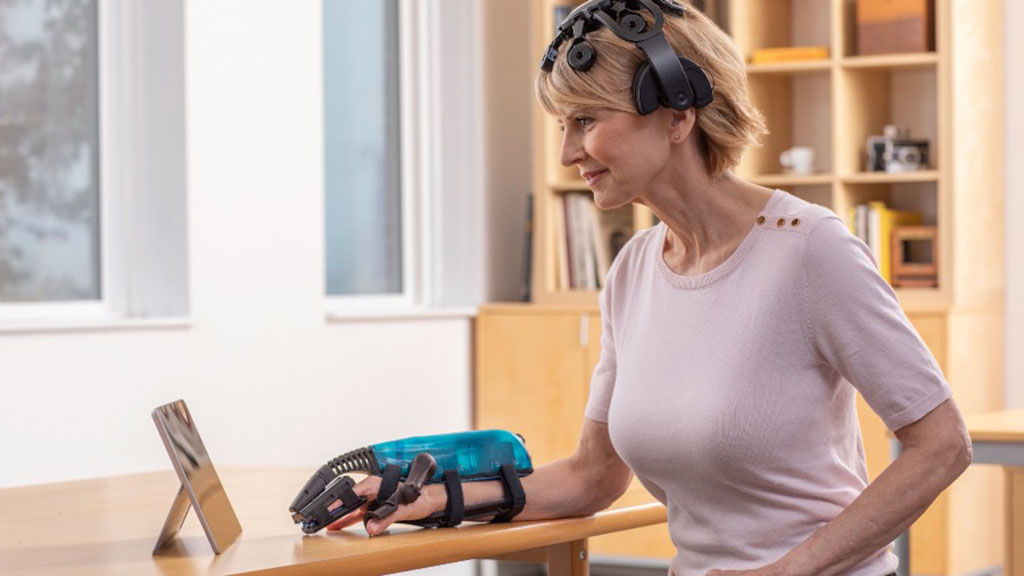Stroke Recovery Device Facilitates Muscle Reeducation
By HospiMedica International staff writers
Posted on 06 May 2021
A brain-computer-interface (BCI) system assists functional rehabilitation in stroke patients with upper extremity disability. Posted on 06 May 2021
The Neurolutions (Santa Cruz, CA, USA) IpsiHand system is designed to leverage the uninjured (ipsilateral) side of the brain to improve arm and hand function by harnessing BCI. The system includes a lightweight, adjustable, battery-powered, robotic exoskeleton that physically opens and closes the patient's hand in response to the patient's thoughts; a wireless electroencephalography (EEG) biometric headset that measure the patient's brain signals; and a tablet application that guides the patient through the therapy session and provides for seamless upload of usage and performance data to the cloud.

Image: The IpsiHand system uses the brain to rehabilitate arm movement (Photo courtesy of Neurolutions)
IpsiHand uses non-invasive EEG electrodes--instead of an implanted electrode or other invasive feature--to record brain activity. EEG data is then wirelessly conveyed to the tablet for to determine the patient's intent to move their affected hand, and analysis of the intended movement. These signals are translated into motor movement signals of the robotic skeleton hand brace, resulting in opening and closing of the impaired hand, wrist, and arm, helping stroke patients improve grasping. The device should not be used by patients with severe spasticity or rigid contractures that can prevent the electronic hand brace from being properly fit or positioned.
“A person whose left hand and arm are paralyzed has sustained damage to the motor areas on the right side of the brain. But the left side of the person’s brain is frequently intact,” said neurosurgeon Eric Leuthardt, MD, founder and chief scientific officer of Neurolutions. “The idea is that if you can couple those motor signals that are associated with moving the same-sided limb with the actual movements of the hand, new connections will be made in your brain that allow the uninjured areas of your brain to take over control of the paralyzed hand.”
Although stroke occurs in the brain, it affects the entire body and can cause long-term disability, such as complete paralysis of one side of the body (hemiplegia) or one-sided weakness (hemiparesis). Stroke survivors may have problems with the simplest of daily activities, including speaking, walking, dressing, eating, and using the bathroom. Intensive, repeated, and long-term rehabilitation training are critical for enhancing the physical mobility of stroke patients, helping to alleviate post-stroke symptoms.
Related Links:
Neurolutions














